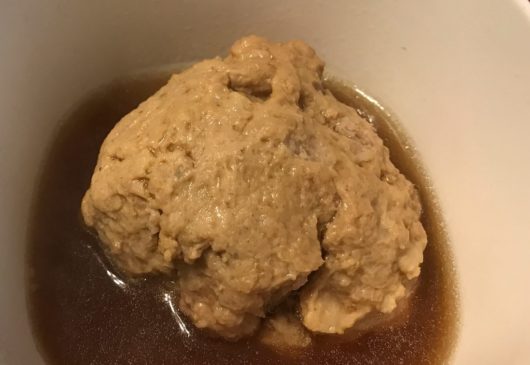Lion's Head Meatballs Lion's Head Meatballs is a classic dish from Huaiyang - so classic, indeed, that it merits its own wikipedia entry. Written recipes for the dish date back to the 17th century and today it's considered one of Huaiyang's most important dishes. The meatballs receive their name for their similarity with the heads of Chinese lion sculptures.
There are two variations of lion's head meatballs. In the most common home version, the meatballs are fried and then steamed. In the version most commonly served in restaurants, the meatballs are first blanched and then simmered in a rich broth enriched with dark soy sauce for up to four hours. I may very well have invented a third version - as I confused the black vinegar with the dark soy sauce and used that instead. This resulted, as you could expect, in a tangier broth.
I'm not sure what to say about these meatballs. The texture, so soft that you could break them with chopsticks, was unexpected. My husband didn't really like them, but they really grew on me. I'm looking forward to the leftovers.
I was pretty faithful to the recipe, beyond my vinegar gaffe, except that I didn't bother with the napa cabbage or bok choy. I did follow the techniques carefully, as they are essential for getting the right texture on the meatballs. I recommend watching the video that accompanied the original recipe to see these techniques in action.
Adapted from a recipe at Reddit r/Cooking |